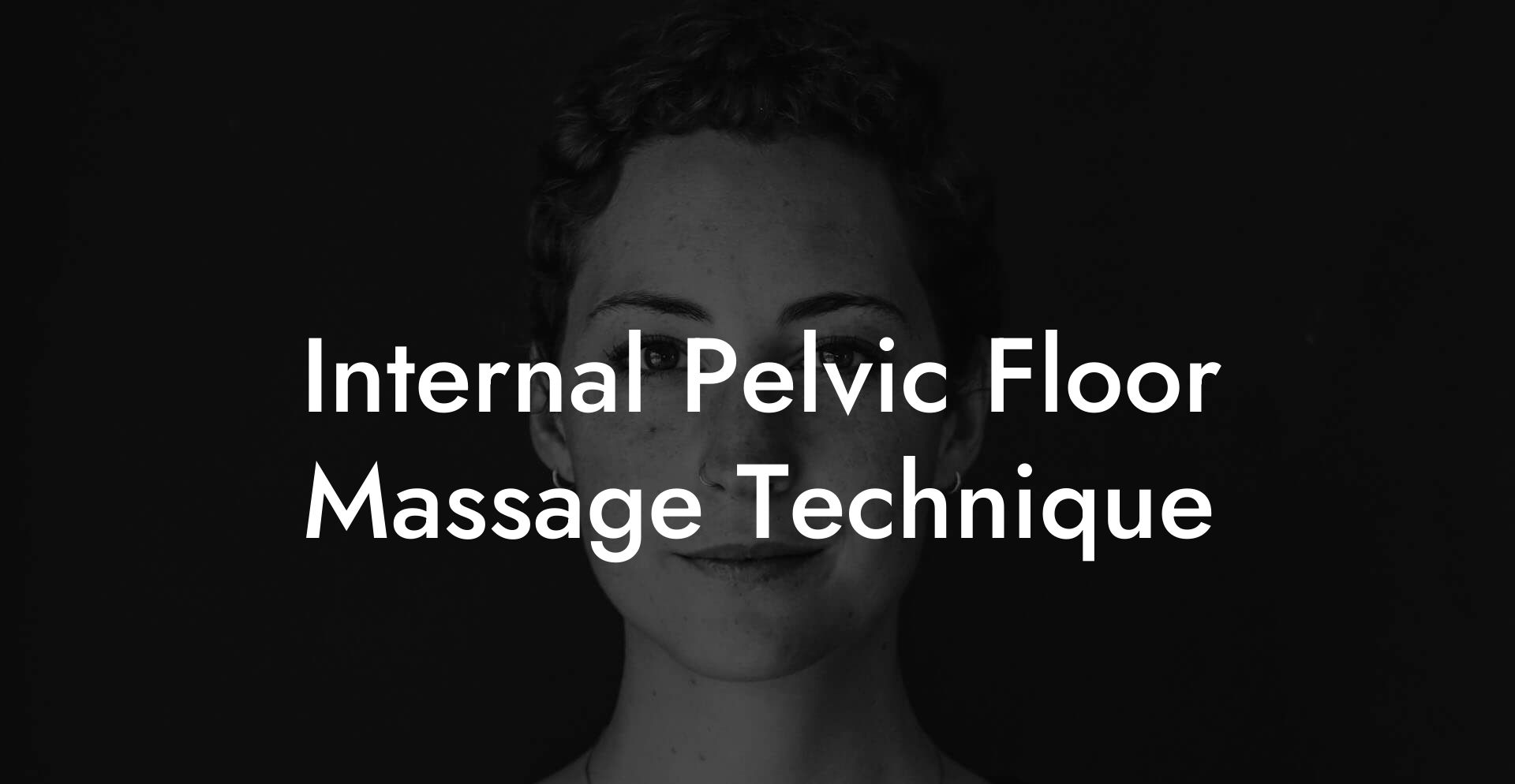Pelvic floor dysfunction affects millions of people around the globe, causing symptoms such as urinary incontinence, difficulty evacuating bowel movements, and pelvic pain. Pelvic floor massage is a beneficial treatment option for those affected, because it targets the deep muscles in the pelvic floor and helps to relieve tension and pain. In this guide, we'll delve into the technique of internal pelvic floor massage, teaching you how to perform this simple yet highly effective method that can lead to improved pelvic health and overall well-being.
Internal Pelvic Floor Massage Technique Table of Contents
Transform Your Pelvic Floor in Just 4 Weeks: The Pelvic Floor Bible
Transform Your Pelvic Floor in Just 4 Weeks: The Pelvic Floor Bible
Internal pelvic floor massage, also known as intravaginal or intrarectal massage, is a non-invasive procedure that targets the deep muscles and connective tissue surrounding the pelvic organs. It can be performed by a trained professional, or learned as a self-care technique to use at home. The goal of this massage is to release tension in the pelvic floor muscles, improve blood flow and circulation within the region, and promote the relaxation and healing of the area.
Before beginning your internal pelvic floor massage, it is crucial to be well-educated about the pelvic anatomy, so you know which areas to target during the massage. The pelvic floor is made up of several muscle layers, including the superficial and deep pelvic floor muscles. The superficial muscles, such as the bulbocavernosus, ischiocavernosus, and superficial transverse perineal muscles, are closer to the surface, while the deep pelvic floor muscles, such as the levator ani and coccygeus muscles, lie deeper within the pelvic cavity.
To perform an internal pelvic floor massage, follow these steps:
1. Find a comfortable and private location where you can relax and have some personal space. You can either lie down on your back with your knees bent and feet flat on the floor, or sit in a chair with your feet flat on the ground.
2. Wash your hands thoroughly and put on a pair of gloves if you prefer. Using a high-quality, water-based lubricant, generously apply it both to your fingers and the entrance of your vagina or rectum.
3. Gently insert a finger or two (depending on your comfort level and personal preference) into the vaginal or rectal canal. Start by feeling for the deep pelvic floor muscles, which are located approximately 1 to 2 inches inside the opening.
4. Apply gentle pressure to the muscles, pressing inward and upward until you feel a tight, tender spot. This may feel like a "knot" or a firm, thickened area within the muscle. Hold the pressure on the tender spot for about 30 seconds to one minute, allowing the muscle to relax and release tension.
5. After the tension in the muscle has been released, slowly massage the area using circular motions, focusing on the surrounding connective tissue. This encourages the flow of blood and helps to strengthen the muscle fibers.
6. Continue this method for each area of tension, working your way around the entirety of the pelvic floor.
7. Once you've completed the massage, gently remove your finger(s) and cleanse the area.
Internal Pelvic Floor Massage Technique Example
Consider a woman who has just given birth and is experiencing discomfort and pain in her pelvic region. She speaks with her healthcare provider, who recommends internal pelvic floor massage as a form of postpartum rehabilitation. The woman decides to give it a try and soon finds that the massage is not only soothing but also helps her regain strength in her pelvic muscles, which ultimately leads to better bladder control and a reduction in pain.
Now that you're equipped with the knowledge and technique of internal pelvic floor massage, you can begin experiencing the pain relief and relaxation that this therapeutic method has to offer. Share this guide with friends and family who may benefit from pelvic floor therapy, and don't forget to explore our other guides on Pelvic Floor Therapy to learn even more about this essential aspect of your well-being.













